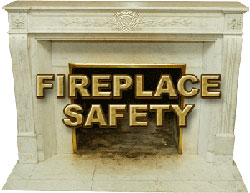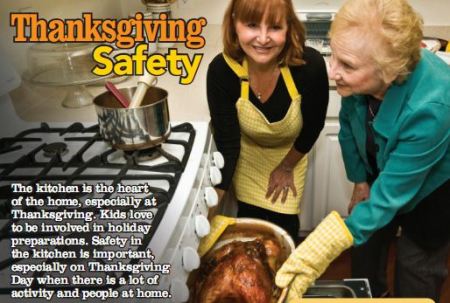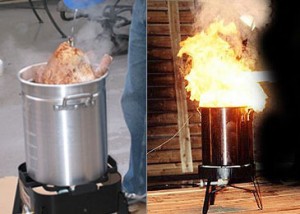11/21/2014 2:48:52 PM EST
Individual and Community Preparedness e-Brief from FEMA and the Suffolk County Department of Fire Rescue and Emergency Services
Season’s Gr-Eatings!
According to the U.S. Fire Administration, Thanksgiving is the peak day for home fires involving cooking equipment. By making safety part of the Thanksgiving dinner menu, you can avoid preventable cooking fires. Here are some steps to follow when preparing your holiday feast:
• Test your smoke alarms to make sure they are working;
• Keep children at least 3 feet away from the stove; and
• Keep an eye on what you are cooking.
In recent years, deep-frying turkeys has become a popular cooking method. While fried turkey may be a tasty addition to your meal, cooking with deep-fat turkey fryers can be a recipe for disaster! They have a high risk of tipping over, overheating or spilling hot oil – which can lead to fires, burns and other injuries.
For a safer alternative to deep-frying your bird, the National Fire Protection Association encourages the use of an outdoor turkey cooking appliance that does not use oil.
Click to access ThanksgivingSafety.pdf
Cooking fire safety outreach materials:
http://www.usfa.fema.gov/prevention/outreach/cooking.html
Turkey Fryers: The National Fire Protection Association discourages the use of outdoor gas-fueled turkey fryers that immerse the turkey in hot oil.
http://www.nfpa.org/safety-information/for-consumers/causes/cooking/safety-with-cooking-equipment/turkey-fryers
Click to access TurkeyFryerSafety.pdf
It’s a Clean Sweep
When the temperatures fall, many people use fireplaces, wood stoves and other fuel-fired appliances to heat their homes. Heating is the second leading cause of residential fires in the U.S. Fires confined to chimneys, flues or fuel burners account for 87 percent of these tragedies and are often due to creosote buildup in chimneys and stovepipes. The U.S. Fire Administration encourages these steps and more to keep your home fires burning safely:
• Have your chimney or wood stove inspected and cleaned yearly by a certified chimney specialist;
• Keep a glass or metal screen in front of the fireplace opening to prevent embers or sparks from jumping out;
• Do not use flammable liquids to start or accelerate any fire; and
• Keep anything that can burn at least 3 feet away from heating sources.
Home fires occur more often in the winter months than any other time of the year. Learn how to properly build and maintain a fire to heat your home with this video series hosted by the National Fire Academy Deputy Superintendent.
 The series includes an overview on inspecting your fireplace, appropriate materials to burn, and how to control the fire to prevent unwanted accidents.
The series includes an overview on inspecting your fireplace, appropriate materials to burn, and how to control the fire to prevent unwanted accidents.
http://www.monkeysee.com/play/16544-how-to-properly-extinguish-a-fire
Heating fire safety outreach materials
http://www.usfa.fema.gov/prevention/outreach/heating.html
Creosote
http://www.merriam-webster.com/dictionary/creosote?show=0&t=1415970544
Winter Fires



